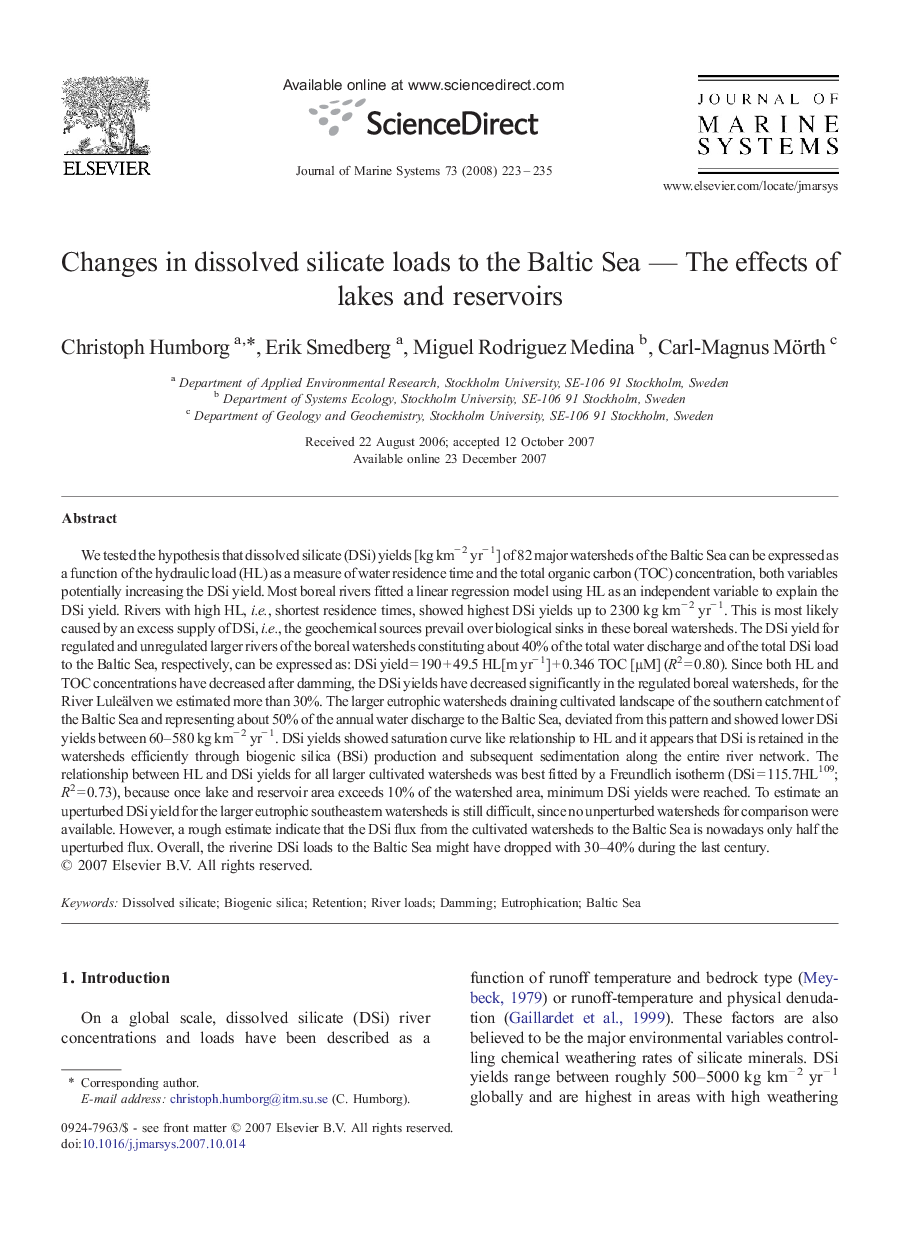| کد مقاله | کد نشریه | سال انتشار | مقاله انگلیسی | نسخه تمام متن |
|---|---|---|---|---|
| 4549057 | 1627344 | 2008 | 13 صفحه PDF | دانلود رایگان |

We tested the hypothesis that dissolved silicate (DSi) yields [kg km− 2 yr− 1] of 82 major watersheds of the Baltic Sea can be expressed as a function of the hydraulic load (HL) as a measure of water residence time and the total organic carbon (TOC) concentration, both variables potentially increasing the DSi yield. Most boreal rivers fitted a linear regression model using HL as an independent variable to explain the DSi yield. Rivers with high HL, i.e., shortest residence times, showed highest DSi yields up to 2300 kg km− 2 yr− 1. This is most likely caused by an excess supply of DSi, i.e., the geochemical sources prevail over biological sinks in these boreal watersheds. The DSi yield for regulated and unregulated larger rivers of the boreal watersheds constituting about 40% of the total water discharge and of the total DSi load to the Baltic Sea, respectively, can be expressed as: DSi yield = 190 + 49.5 HL[m yr− 1] + 0.346 TOC [µM] (R2 = 0.80). Since both HL and TOC concentrations have decreased after damming, the DSi yields have decreased significantly in the regulated boreal watersheds, for the River Luleälven we estimated more than 30%. The larger eutrophic watersheds draining cultivated landscape of the southern catchment of the Baltic Sea and representing about 50% of the annual water discharge to the Baltic Sea, deviated from this pattern and showed lower DSi yields between 60–580 kg km− 2 yr− 1. DSi yields showed saturation curve like relationship to HL and it appears that DSi is retained in the watersheds efficiently through biogenic silica (BSi) production and subsequent sedimentation along the entire river network. The relationship between HL and DSi yields for all larger cultivated watersheds was best fitted by a Freundlich isotherm (DSi = 115.7HL109; R2 = 0.73), because once lake and reservoir area exceeds 10% of the watershed area, minimum DSi yields were reached. To estimate an uperturbed DSi yield for the larger eutrophic southeastern watersheds is still difficult, since no unperturbed watersheds for comparison were available. However, a rough estimate indicate that the DSi flux from the cultivated watersheds to the Baltic Sea is nowadays only half the uperturbed flux. Overall, the riverine DSi loads to the Baltic Sea might have dropped with 30–40% during the last century.
Journal: Journal of Marine Systems - Volume 73, Issues 3–4, October 2008, Pages 223–235